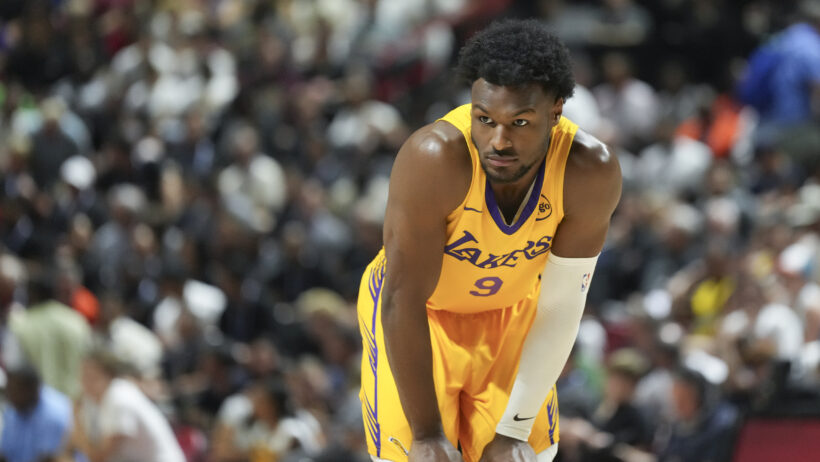Expected Value & Calculating Edge in Sports Betting

Expected value is the mathematical foundation of any smart sports bet.
After you get past the basics of understanding point spreads and moneylines, and dive a little deeper into sports betting strategy, you’ll often hear people talking about expected value – EV, for short – and the perceived edge.
Many bettors get by without understanding expected value, focusing simply on picking winners and nothing else. But the truth is that sports betting is as much about math as it is about sports.
That’s why most professional bettors obsess over the hunt for value bets. EV will tell you if the odds offered on a betting line match the actual probability that outcome will occur. Sound complicated?
Understanding expected value is a bit tricky at first, but it is the key to knowing if you’re getting the right price for the bet. Like any commodity, betting lines are sold at different prices, and some are a much better deal than others.
The more you understand that the probability implied by the odds doesn’t always match the actual probability of an outcome, the more you’re likely to beat your sportsbook in the long run.
- BETMGM SPORTSBOOK
USE CODE SBD1500 & GET $1,500 BACK IN BONUS BETS
- BET365 SPORTSBOOK
BET $5 & GET $150 IN BONUS BETS WITH CODE DIME365
- FANATICS SPORTSBOOK
BET & GET UP TO $1,000 IN BONUS BETS!
- DRAFTKINGS SPORTSBOOK
BET $5 & GET $150 IN BONUS BETS INSTANTLY!
- FANDUEL SPORTSBOOK
BET $5 & GET $150 IF YOUR BET WINS
- CAESARS SPORTSBOOK
USE CODE SBD2DYW & BET $1 TO DOUBLE THE WINNINGS ON YOUR FIRST 10 BETS!
Must be 21+. GAMBLING PROBLEM? Call 1-800-GAMBLER (CO, IL, KS, KY, MD, MI, NC, NJ, OH, PA, TN, VA, VT, WV, WY); (800) 327-5050 or gamblinghelplinema.org (MA); (877) 8-HOPENY (NY); 1-800-NEXT-STEP (AZ); (888) 789-7777 (CT); 1-800-BETS-OFF (IA); 1-800-9-WITH-IT (IN); mdgamblinghelp.org (MD); morethanagame.nc.gov (NC); 1800gambler.net (WV)
What Is Sports Betting Expected Value?
So now that you’ve heard the term expected value, what does it actually mean? Looking at an example is the easiest way to wrap your head around it.
Let’s say a sportsbook has a Major League Baseball line up with the New York Yankees at -120 to beat the Los Angeles Dodgers. The first thing you want to ask yourself is whether this is a fair line.
To do so, you need to give the Yankees a winning percentage you think is accurate. For example, if these teams play 100 times, how many times do you think they’ll win? Statistics, trends, momentum, and anything else that you deem important to handicapping a game should be used to formulate this number.
Let’s say that you’ve crunched the numbers and think the Yankees as having a 60% chance of winning this game. This is your true implied probability. The next step is to contrast this probability with that suggested by the odds to determine whether there is value on the line. This is how you calculate edge in sports betting.
Translate Odds Into A Percentage To Calculate Perceived Edge
Betting odds tell you a lot more than just what payout you’ll get if you win. Odds can be translated into an implied probability that can then be contrasted with your true implied probability (60% in this case) to determine if you have a (perceived) edge or not.
This simple comparison requires you to convert the bookmaker’s odds into a winning percentage.
That formula looks like this:
Convert ‘minus’ moneyline odds to its implied probability:
Implied probability = (- (Odds) / ((- (Odds)) + 100)
Convert ‘plus’ moneyline odds into implied probability:
Implied probability = 100 / (‘plus’ moneyline odds + 100)
In this case, the Yankees are listed at -120:
120 / (120 + 100)
Implied probability derived from sportsbook odds = 54.5%.
Removing the vig from the sportsbook odds will make this implied probability more accurate.
Comparing our true implied probability with the implied probability from the sportsbook odds, we can clearly see an edge on this wager, because 60% > 54.5%.
You have a perceived edge whenever your true implied probability is greater than that suggested by the odds. To find the exact size this edge expressed as a percentage, we need to do another simple calculation.
Edge = (True Implied Probability * Decimal Odds at Sportsbook) – 1
You’ll need the sportsbook odds expressed as a decimal. Our odds converter will save you the trouble of doing so by hand. In this case, the -120 odds at the sportsbook translate to 1.83 when expressed as a decimal.
Edge = (.6 * 1.833333) – 1
Edge = .1
Edge = 10%
This 10% edge means that we can expect to turn a 10% profit over the long haul when betting this line. Obviously, the concept is a bit abstract and only holds if both the sportsbook odds and our expected winning percentage are accurate.
Let’s say we make this bet 100 times, and for sake of ease, let’s say we are betting $120 each time. Again, we also have to assume we live in a perfect world, where the sportsbook’s odds are bang-on, as is our true implied probability.
We would win this bet 60 times. And we would lose this bet 40 times. (Based on our 60% true implied probability.)
- When we win, we profit $100 each time (Based off the -120 odds)
- 60 x $100 = $6,000 in profit
- When we lose, we hand over $120 each time
- 40 x $120 = $4,800 in loss
After making the bet 100 times, we would be +$1,200. ($6,000 – $4,800). If we boil this number down to a profit per bet, we’d be making $12 for each bet we made. ($1,200 /100). $12 is 10% of the $120 we are risking each time ($120 / $12). Therefore, our edge is 10%.
How to Find Value in Sports Betting
If you spend enough time researching or talking about sports betting, you’ll become very familiar with the term ‘value bets.’
Finding value bets is straightforward once you understand the concept of expected value. Quite simply, any bet with positive expected value, or a perceived edge, can be considered a value bet. That’s why you’ll likely see the term used interchangeably with ‘EV+ bets.’
Any bet with positive expected value can be considered a value bet.
There’s not a single percentage at which an EV+ wager becomes a ‘value bet.’ If your time horizon is infinite and your math is correct, even the slightest amount of positive expected value will grow your bankroll over the long run.
The trick to value betting is striking an ideal balance between capitalizing on EV+ opportunities without taking on an unacceptable amount of risk. This balance depends on the size of your bankroll and ability to withstand variance when betting longer odds.
Plan Ahead for Variance
Variance is the last important thing to understand around expected value. Variance measures how far a set of numbers are spread out from their average.
Variance becomes highly relevant to sports bettors when you consider hot and cold streaks. Understanding it is a key element of responsible bankroll management.
For example, let’s say your winning edge is 10%, as we calculated above. Over the series of a long baseball season, you’re going to win about 10% on your money. But you might go on a long losing streak amid this long-term growth. You and your bankroll need to be prepared for that.
Your 10% edge says that you should – roughly speaking – win a pick, lose a pick, win a pick, lose a pick and be slightly ahead at the end of the season. However, we know that it’s never that straightforward and you’re going to encounter some streaks.
Let’s say you start with a bankroll of $1,000 and you’re betting $200 per game. Hit a five-game losing streak, and you’re done for the year. You must account for this variance because luck is always a factor when betting on any sporting event.
You have to be prepared for a worst-case scenario. Using betting units of an appropriate size is one of the best ways to mitigate risk and ensure the long-term success of your efforts.
Enough Expected Value to Be Worth A Bet?
Once you’ve done the math, the next question is whether or not you want to place a bet.
Going back to our example above, you see a 10% edge in your favor. At this point, you need a general rule to determine whether it’s a play for you.
For example, maybe you only bet on games where you have a 10% edge or higher. Maybe you only bet on games where it’s 3% or higher. Different bettors have different policies.
Remember that this is all hypothetical. Sure, if your perceived edge is 10%, that implies you’ll win $10 for every $100 you bet.
However, the reality could be very different. Bets with tons of positive expected value often come with long odds. This makes them a risky short-term proposition despite their long-term value.
You might lose the bet altogether and then you’re down $120. The idea is that if your handicapping strategy is well constructed and your math is right, then in the long run, you’ll have the edge every time – even if you lose a bet today and win one tomorrow.
In the longer run, the goal is simply to put the edge in your favor rather than the house’s.
At the end of the day, it takes a lot of experience to develop the right formulas and to understand how to bet the lines. However, understanding expected value will help you avoid sucker’s bets and better comprehend what the sportsbook thinks is likely to happen.
Removing vigorish from the odds takes this strategy to the next level.
Get Started with More Betting Tips
If you’re looking for more helpful insights to help you manage your money and find value bets, explore the rest of the content in our Betting 101 section.
From there, you can further dial in your sports betting strategy to get a leg up on the sportsbook and your competition.

Evergreen Manager; Sportsbook Expert
Following a sports journalism career with his work appearing in outlets like theScore, The Province, and VICE Sports, Patrick moved into the world of content marketing to bridge the gap between great writing and SEO success. He’s brought that same mindset to lead evergreen content efforts at SBD.




